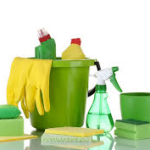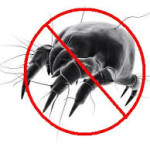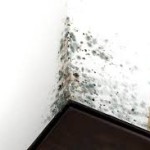 Is Your Home Making You Sick?
Is Your Home Making You Sick?
If you are anything like me, your home is your haven, the safe place you retreat to when all else fails in life. Well what if I told you that the air in your home may contain a number of indoor air pollutants that can cause serious respiratory issues such as asthma, lung disease and cancer.
To answer the question is your home making you sick? Below is a list of the most common pollutants found in your home and tips on how to eliminate them.
- Cleaning Products

Household cleaners contain a number of chemicals such as chlorine and ammonia which can expose you to a number of toxins.
Tips: In order to avoid exposure, it is recommended to use natural non toxic cleaning solutions such as lemon, vinegar, baking soda and olive oil.
- Pet Dander
 Pet Dander is composed of tiny microscopic flecks of skin shed by dogs, cats, rodents and other common household pets. Fur and feathers can trigger allergic reactions.
Pet Dander is composed of tiny microscopic flecks of skin shed by dogs, cats, rodents and other common household pets. Fur and feathers can trigger allergic reactions.
Tips: If you have pets, it is best to reduce the dander levels in your home to avoid allergic reactions. Ways to do this include, keeping your pets out of your bedroom, regular vacuuming, regular grooming of your pet. If you are thinking about getting a dog, smaller dogs tend to shed less dander.
- Dust Mites

Dust mites are tiny insects that can be found living among humans in bedding, upholstery, mattresses, curtains and carpets. They like to live and breed in warm, human environments. Dust mites feed on human skin cells, and are a common cause of asthma and allergies. Not only is it very difficult to see them with the human eye, it is difficult to completely rid your home of mites, but you can reduce their population significantly.
Tips: In order to limit the amount of mites in your home, it is recommended to keep the humidity level in your home to less than 50 per cent. Protecting your mattresses with allergen-resistant covers and washing sheets and blankets regularly in hot water will also help. Much like head lice, these little microscopic bugs can be killed in 20 minutes in a hot tumble dryer. Most important, keep your house dust, dander and clutter free as possible and vacuum regularly.
- Mold

Mold is a type of fungus that grows in warm, damp and humid environments. People have different sensitivities to mold, but if you are a person who is sensitive to mold exposure the symptoms are much like those of an allergic reaction. Mold exposure can cause eye and skin irritation, coughing, sneezing and nasal congestion. Severe allergic reactions to mold include shortness of breath and fever. Mold can be dangerous, it can even cause chronic respiratory problem with excessive exposure.
Tips: It is important to do a thorough check regularly of your home to determine if you have a mold problem. The biggest culprits are kitchens, bathrooms , showers and plants. If you do see mold, the best way to clean it is using one cup of bleach to a gallon of water. Be sure to open up windows, for proper ventilation. In order to keep mold away it is recommended that you choose cleaning products that have mold and mildew killing agents in them. Do not use carpeting in basements and bathrooms and keep firewood outdoors as it can harbour mold. It is also recommended to check the soil in your plants regularly and re pot any plants that have mold growing in the soil, but keep your houseplants, they are a great air purifier.
- Radon
Radon is a colorless, odorless gas that is formed by the decay of uranium in rock, soil and water. It moves through the ground into the air and is a leading cause of lung cancer, after smoking. Radon gas turns into radioactive particles that can be trapped in your lungs while you breathe and can cause damage to the lung tissue. The most radon found in your home would come from the soil underneath your house through cracks in the foundation, pipes and sump pumps. Radon can also be found in granite countertops.
Tips: In order to protect your family from radon, it is recommended to purchase a radon detection kit from your local hardware store. If you find the radon levels are above 200 becquerels per cubic metre, it is recommended that you have a certified radon professional to determine the best radon reduction method.
- Smoke

It’s no surprise to hear that second hand smoke is deadly and very harmful to children. Secondhand smoke can cause ear infections, severe asthma attacks , bronchitis and pneumonia. Second hand smoke is a leading cause of heart disease among adult non smokers.
Tips: The only way to fully protect yourself from the hazards of second hand smoke is to eliminate smoking in your home. If you’re a smoker and have children, protect their lungs by not smoking near them when you are outside.
While it may be difficult to eliminate all risks within your home, following these tips will likely reduce the risks significantly, preventing you from your home making you sick.
(Visited 111 times, 1 visits today)








 Pet Dander is composed of tiny microscopic flecks of skin shed by dogs, cats, rodents and other common household pets. Fur and feathers can trigger allergic reactions.
Pet Dander is composed of tiny microscopic flecks of skin shed by dogs, cats, rodents and other common household pets. Fur and feathers can trigger allergic reactions.

